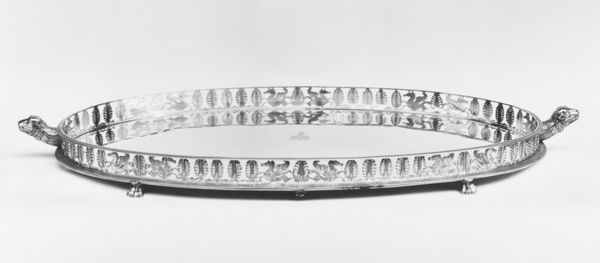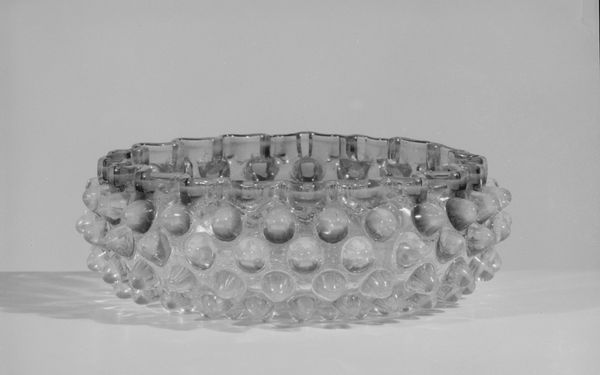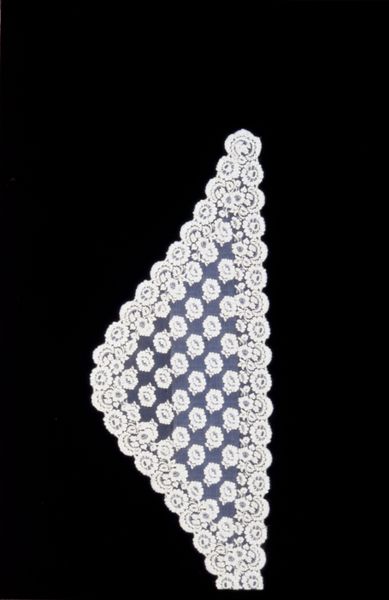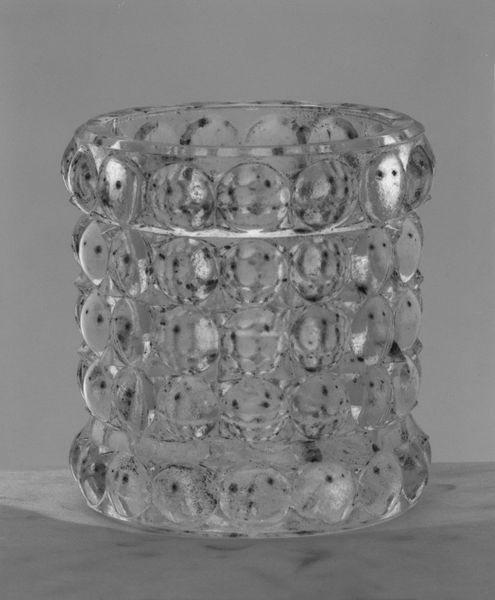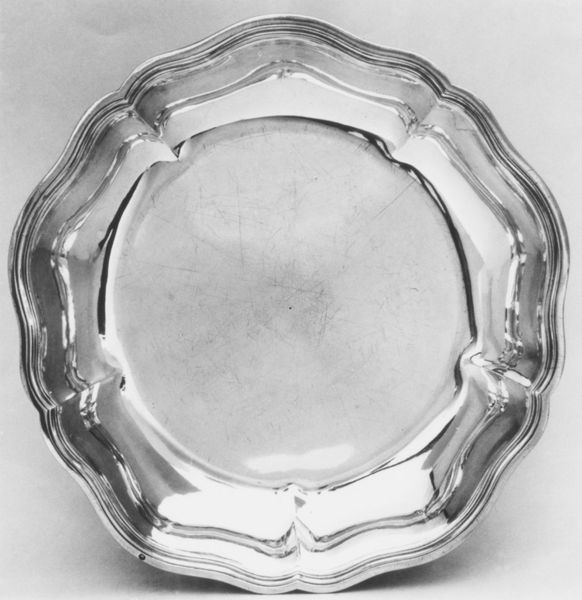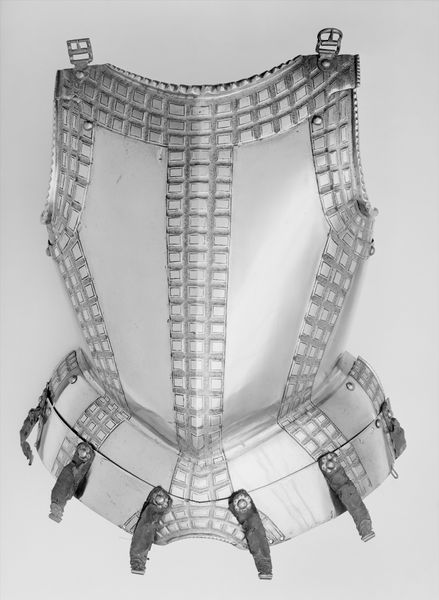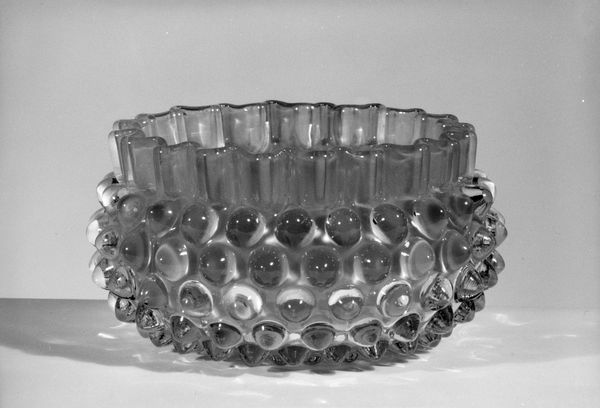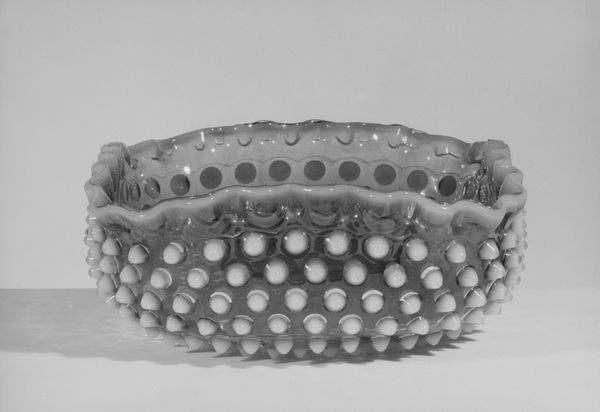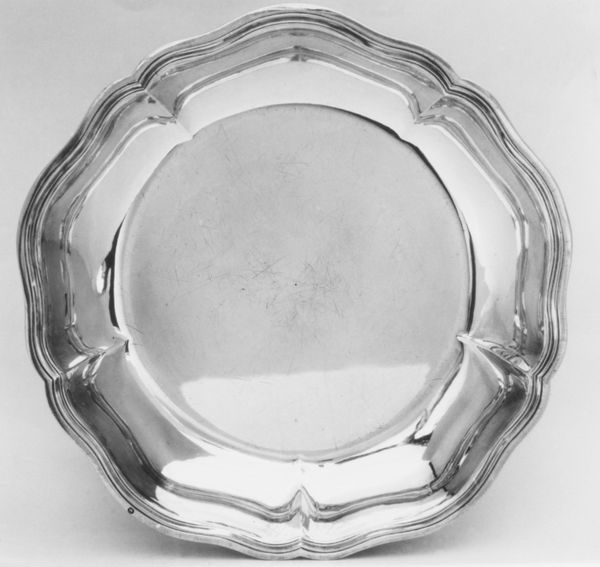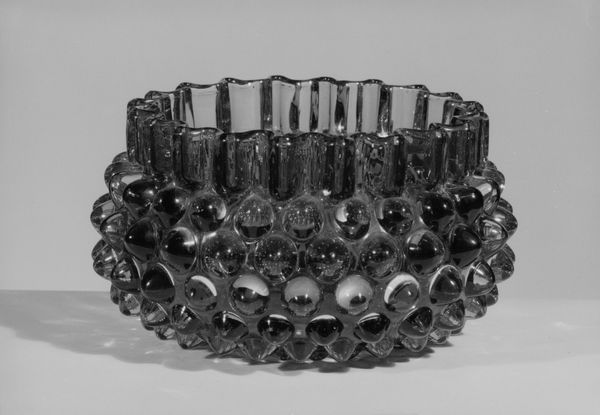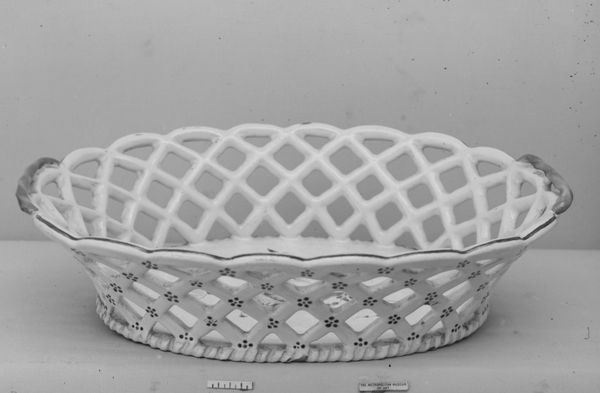
glass, sculpture
#
sculpture
#
glass
#
sculpture
#
decorative-art
Dimensions: H. 3 in. (7.6 cm); Diam. 6 in. (15.2 cm)
Copyright: Public Domain
Editor: Right now, we're looking at "Bowl," crafted between 1885 and 1893 by Dalzell, Gilmore and Leighton. It’s currently housed at the Metropolitan Museum of Art. What first strikes me is the clarity and detail achieved in the glasswork, it almost appears to have been forged from ice. What catches your eye, initially? Curator: Funny you should say "ice," as I think that hits on a lot of this bowl’s charm. For me, it's the play of light. Imagine this sitting on a Victorian-era table, candlelight dancing within its facets. I envision a still life of sorts - reflections, like liquid fireworks. It really elevates a functional object to an art form. Makes you wonder, what kind of sweets or fruits were worthy of display in a piece like this? What was worth savoring? Editor: The thought of how this bowl might have been used, in somebody's home, that definitely enhances my view. You mentioned light; I can see the reflective potential, and that brings this somewhat static form to life. Is it common for glass pieces of this era to be so intricate? Curator: Intricacy was indeed a hallmark of the late 19th-century decorative arts, as artists were concerned with mass manufacturing replacing true craftsmanship, or so the theory goes. Also, bear in mind the social context – think of the opulence of the Gilded Age. So there's both nostalgia and forward progress in the item. You have a sense of nostalgia by replicating handiwork that will soon be antiquated, or lost. And you have modern machinery which gives new avenues to expand art using methods never before tried, nor conceptualized. Do you find that intriguing, how the old world gives way to new invention? Editor: It's incredibly interesting to consider the Bowl not just as a beautiful object, but as a cultural artifact caught between two worlds. I appreciate your illuminating insights that helped unlock these historical perspectives that influence it so prominently. Curator: And thank you for prompting that excavation; I suppose every piece has more to say, and simply requires the right questions to begin speaking.
Comments
No comments
Be the first to comment and join the conversation on the ultimate creative platform.
